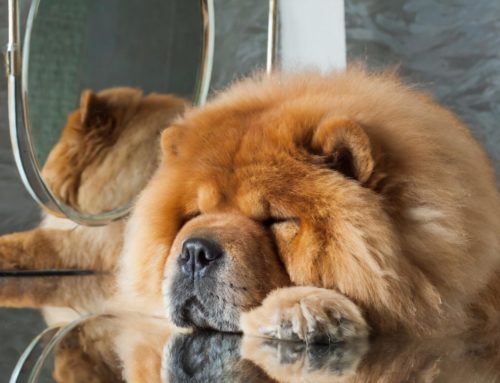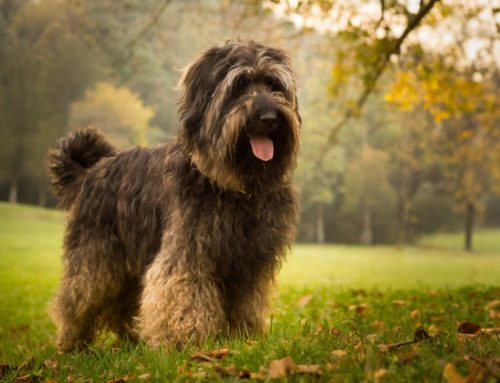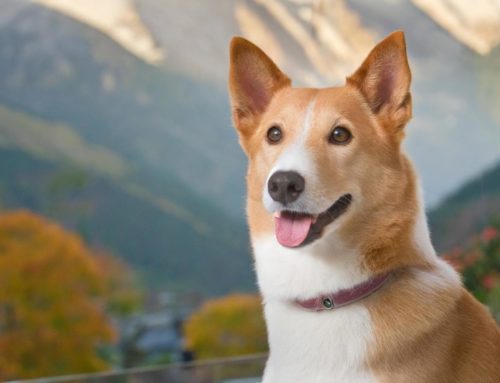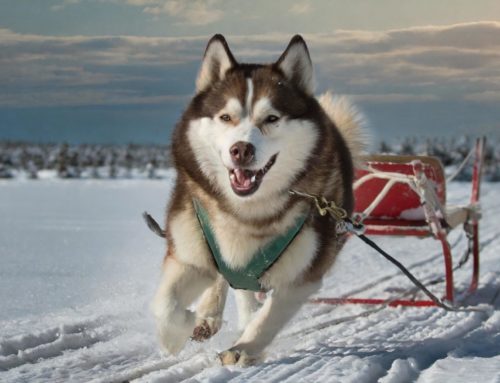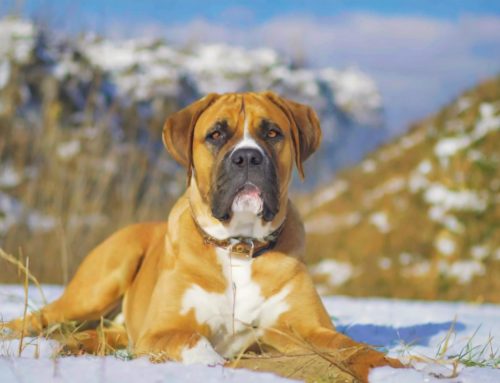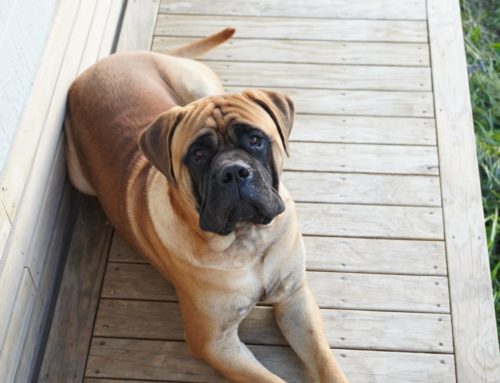
The English Basset Hound, with its distinctive physique and gentle nature, has a rich history deeply rooted in hunting culture.
The term ‘Basset’ comes from the French word ‘bas’, which refers to the dog’s build – low-legged. This breed originated from the Basset Artésien Normand, a French breed known for its excellent sense of smell and was used for hunting hares and rabbits.
Today’s Basset Hound, with its long back and distinctive long ears, was further developed for breeding in Britain and the United States in the 19th century. Breeder Peggy Keevil was instrumental in shaping the modern breed as we know it today.
Her efforts resulted in a dog with a melodious voice, perfect for hunting, as well as a gentle and affectionate companion dog. The Basset Hound Club in both the Netherlands and other countries helps fanciers and breeders to preserve and improve the breed’s description.
The typical Basset Hound is tri-coloured or bi-coloured, such as red and white, and is known for its ‘good nose’, which made the breed ideally suited for tracking down shot game while hunting. Over the years, the Basset Hound has become very popular as a pet. Their size and character make them an ideal small dog for families.
The long ears and appearance of the Basset Hound
The Basset Hound, with its unmistakable appearance, is a popular dog breed that stands out for its unique physical characteristics. This short-legged, elongated dog has a remarkable body length in relation to its height. With a shoulder height of about 38 cm and a weight of up to 35 kg, the Basset Hound has a robust and compact build.
One of the Basset Hound’s most distinctive features are its long, pendant ears, which must be well-maintained to prevent ear infections. Their short, low-maintenance coat may have loose hairs that need to be removed regularly to keep the coat healthy. The typical colours of their coat vary, but often include combinations such as black and white-brown.
Basset Hounds are known for their great stamina and excellent sense of smell, traits that used to make them efficient hunting dogs, especially when hunting small game. Their low build and crooked legs give them a unique appearance, but can also give rise to health problems such as hip dysplasia and joint problems.
It is therefore important that they get sufficient exercise, adapted to their physical abilities, to maintain their health.
Hereditary diseases and conditions such as hip dysplasia and eye diseases
The Basset Hound, a charming and unique breed of dog, is unfortunately prone to several hereditary diseases and disorders.
Here is a list of some of the most common hereditary diseases in the Basset Hound:
- Ear infections: Due to their long hanging ears, Basset Hounds are particularly prone to ear infections, which should be checked and cleaned regularly.
- Hip dysplasia: A common condition in larger breeds, caused by abnormal development of the hip joint, which can lead to arthritis and pain.
- Eye diseases: Includes glaucoma and entropion, in which the eyelid turns inwards and causes irritation.
- Joint problems: Mainly because of their long backs and short legs, which can lead to back and joint pain.
- Bloat (Stomach Torsion): A serious condition where the stomach twists and swells, often life-threatening if not treated quickly.
- Skin problems: Includes allergies and skin infections, often due to their loose skin folds.
- Thrombopathy: A blood clotting disorder that can lead to excessive bleeding.
- Deafness: Deafness can occur especially in older dogs.
Characteristics of the Basset Hound
The Basset Hound, with its distinctive long ears and friendly appearance, is a breed known for its gentle and patient nature.
These dogs, with their roots in the English Basset Hound and the French Basset d’Artois, have developed over the years into excellent family dogs. Their ability to track down shot game originally made them popular as tracking dogs, a legacy still evident in their curious and tenacious nature.
Characteristics of the Basset Hound, such as their loose skin, require some grooming, such as regularly removing loose hair and taking care of their backs and ears to avoid health problems.
Despite their sometimes stubborn attitude, Basset Hounds are generally easygoing and fit well into a family environment. They get along well with children and other pets, provided they are treated with respectful and consistent guidance.
Adult Basset Hounds are usually calm and affectionate pets, who enjoy the sociability of their family. They need daily exercise, although their need for it is not as high as in some other dog breeds. A daily walk is usually enough to keep them healthy and happy. The Basset Hound, once popular as something of a fashion dog, remains a favourite choice for many families.
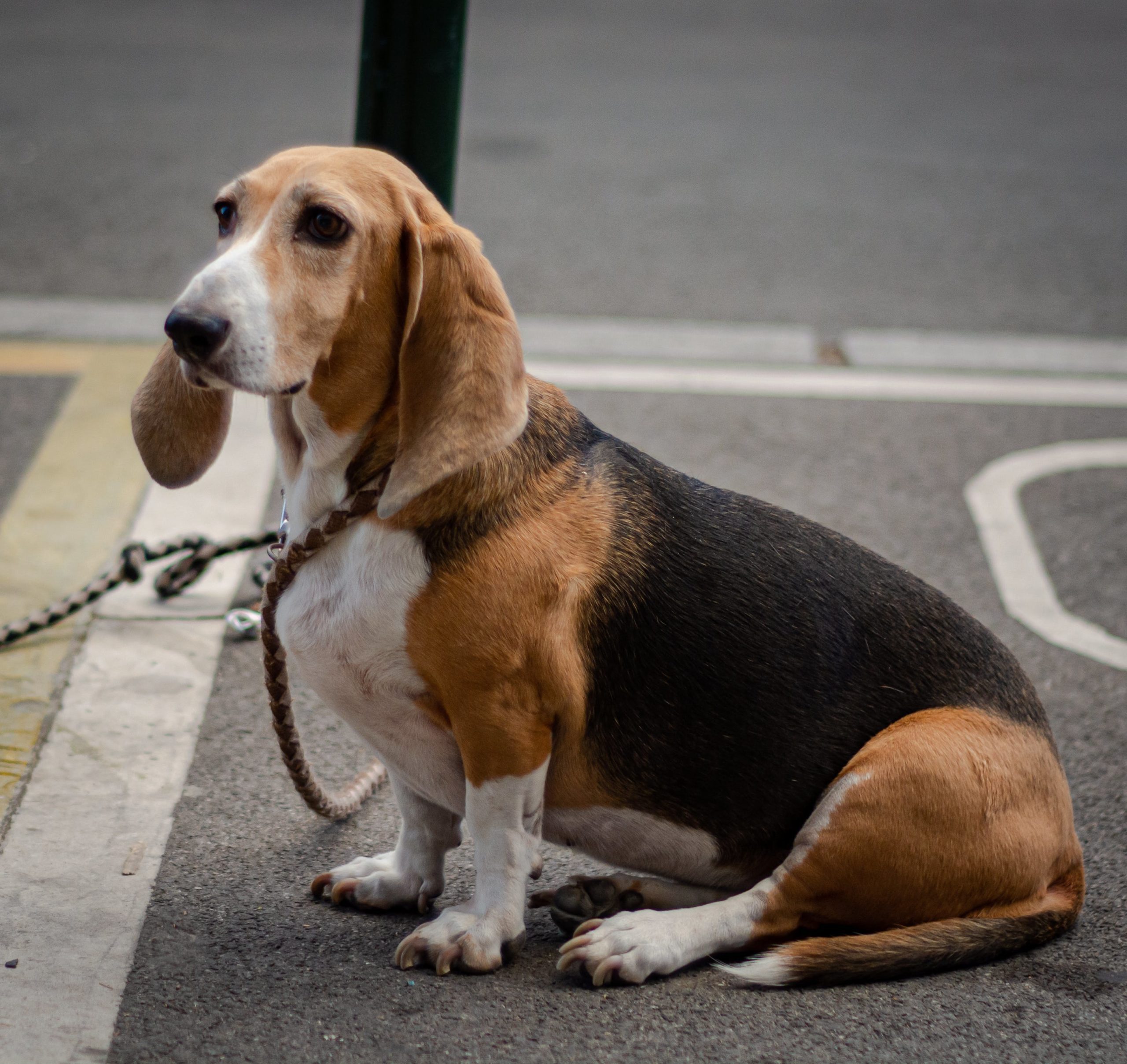
The Care of the French Basset Hound
The care of a Basset Hound requires specific attention, mainly because of their unique physical characteristics. As a gentle and affectionate dog, the Basset Hound fits well in a family environment, but their grooming is an important aspect of keeping them healthy and happy.
The Basset Hound’s coat requires regular grooming. Although their coat is short, they lose a considerable amount of loose hair. Regular brushing helps to remove these loose hairs and keep their coat healthy. It is also important to pay attention to their long ears, which are prone to infections.
Regular cleaning and checking of the ears are necessary to prevent problems. The Basset Hound’s back, characteristically long and sometimes sensitive, requires caution when lifting or flipping the dog. Be sure to support their back to avoid injury.
As for exercise, the Basset Hound does not need as much as some other dog breeds, but daily walks are essential for their physical and mental well-being. They enjoy tracking and exploring their surroundings, reflecting their hunting instinct.
Socialisation and upbringing of the Basset Hound
The socialisation and upbringing of a Basset Hound are crucial aspects that contribute to the development of a well-adjusted and happy dog. The Basset Hound, known for its gentle nature, is an excellent family dog and fits well in a domestic environment with other dogs and pets.
From puppy age, it is important to expose the Basset Hound to different situations, sounds and people. This helps to socialise them and reduce fear or reluctance in new environments. As a breed originally used as a mutt dog, they enjoy company, both from people and other dogs.
Training should begin as soon as the puppy arrives in its new home. Despite their sometimes stubborn nature, Basset Hounds are intelligent and can be trained with consistent and respectful methods. It is important to consider their physical characteristics, such as their long backs and ears, during training sessions to avoid injury.
Regular walks are essential for their physical and mental well-being, and it also provides an excellent opportunity for training and socialisation. It is important to be patient and consistent with the Basset Hound, allowing them to grow into well-mannered adult dogs.
How much experience does a Basset Hound require
Known for its friendly and gentle nature, the Basset Hound can be a suitable choice for both experienced and inexperienced dog owners. This breed requires a specific approach to care and upbringing, but the general requirements are manageable even for those new to dog keeping.
For inexperienced owners, it is important to know that despite its small size, the Basset Hound has specific needs. Their long backs and ears require special attention to avoid health problems. Regular walks are essential, but should be tailored to their physical abilities to avoid injury.
Experience can be beneficial in recognising and responding appropriately to the Basset Hound’s unique characteristics, such as their tendency to be stubborn during training sessions or their tracking tendencies during walks. Experienced dog owners may be better prepared to handle these behaviours.
However, with the right information, such as that provided by breeders or breed associations, inexperienced owners can successfully learn how to handle a Basset Hound. The breed is often praised as a good family dog because of its calm and loving nature.
Is training necessary?
Training is definitely necessary for the Basset Hound, as it is for all dogs. Although the Basset Hound is known for its gentle temperament, its stubbornness can be a challenge during training. This makes consistent and patient training essential to develop an obedient and well-adjusted dog.
Originally bred as a hunting dog, the Basset Hound has a strong propensity for tracking. Training can help control this natural urge, especially during walks. It is important to teach them to respond to commands such as ‘hush’ (quiet) or ‘here’, especially when they are distracted while tracking.
The Basset Hound’s physical characteristics, such as its long back and long ears, require special attention. Training should take these characteristics into account to avoid injury, especially during physical activities.
Although the Basset Hound is sometimes considered a ‘fashion dog’, it is important to remember that this breed, like any dog, has specific needs that must be addressed through training and socialisation. An adult Basset Hound that is well trained and socialised will be a great addition to any household and gets along well with both people and other pets.
How much exercise does a Basset Hound need?
The Basset Hound, known for its relaxed attitude, still needs daily exercise despite its calm nature. Although this breed is not as energetic as some other dog breeds, regular physical activity is crucial for their health and well-being. On average, an adult Basset Hound needs about one hour of exercise a day, spread over several walks.
Long walks at a moderate pace are ideal. This helps keep their weight under control, which is essential given their predisposition to weight problems and related health risks, such as back problems.
Play sessions can also be part of their daily exercise, but it is important to be careful with activities that can put too much pressure on their back and joints. In addition, mental stimulation, such as scented games that appeal to their natural tracking instincts, is a good way to keep them active both physically and mentally.
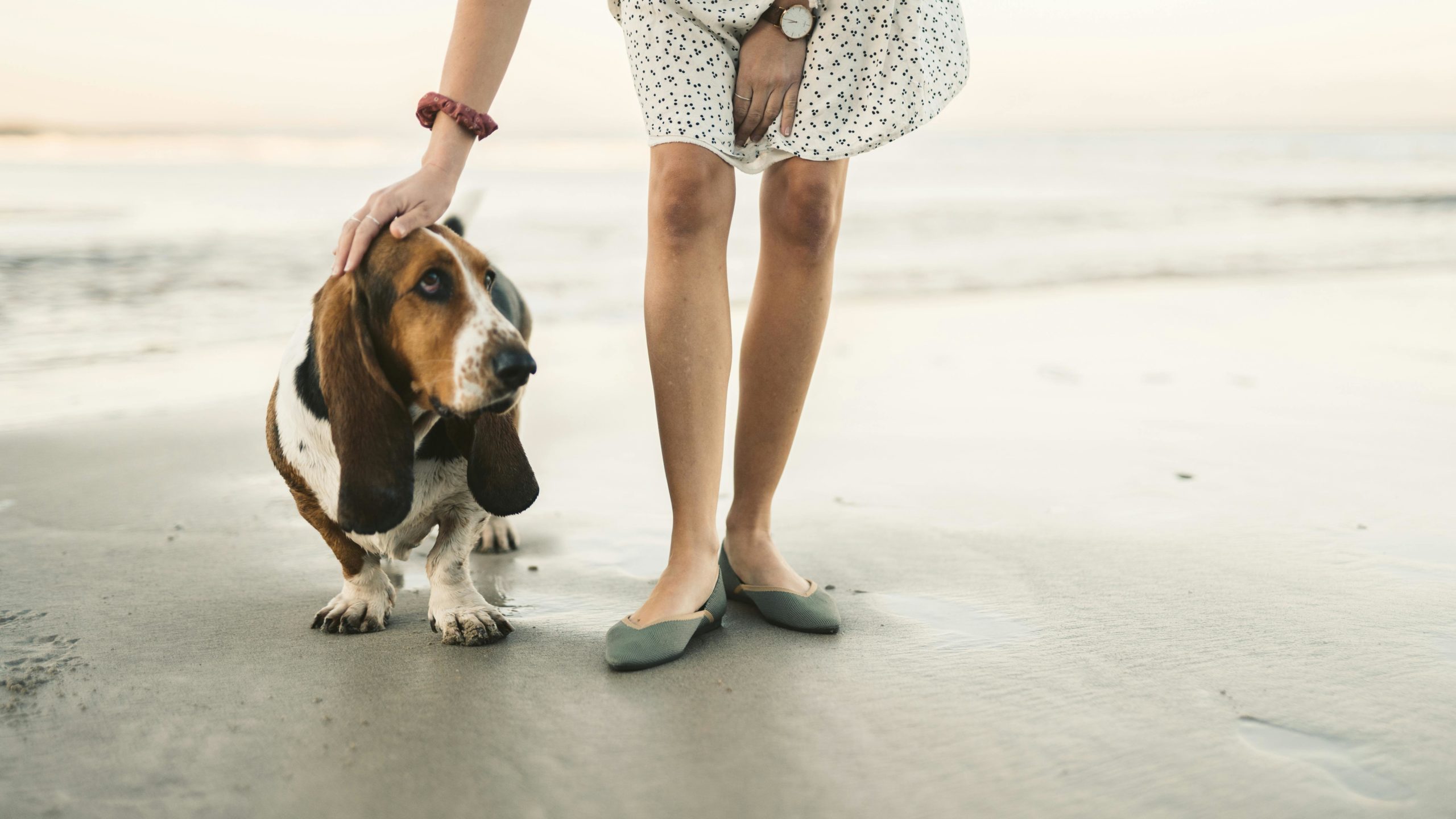
Family dog with children
The Basset Hound is known as an excellent family dog and generally gets along well with children. Their calm and friendly nature makes them ideal companions for families. Basset Hounds are tolerant and patient, which makes them suitable for interaction with children of different ages.
Despite their gentle temperament, it is important to monitor interactions between Basset Hounds and young children. Children should be taught how to treat the dog respectfully and gently, especially because of the Basset Hound’s unique physical characteristics, such as their long backs and ears.
It is crucial to instruct children not to climb on the dog or play rough, to avoid injuries to both the dog and the child. Basset Hounds can sometimes be stubborn, but with proper training and socialisation, they can develop excellent behaviour around children and other pets. Their affectionate nature makes them beloved members of the family.
Benefits of a Basset Hound
- Affectionate and Friendly: Basset Hounds are known for their loving and friendly nature, which makes them great family dogs.
- Good with Children and Other Pets: They are generally patient and tolerant, which makes them suitable for families.
- Quiet Character: They are less energetic and hyperactive than some other breeds, making them ideal for quieter households.
- Intelligence: Although sometimes stubborn, they are intelligent and can be trained well.
Disadvantages of a Basset Hound
- Care: Their long ears and loose skin require regular grooming to prevent infections and skin problems.
- Health problems: They are prone to certain health problems, such as back problems, joint problems and ear infections.
- Stubbornness: Their independent nature can sometimes make training challenging.
- Exercise needs: Despite their calm nature, they need regular, moderate exercise to stay healthy.
How old a Basset Hound gets
The life expectancy of a Basset Hound averages between 10 and 12 years, although some individuals can reach an age of 14 years or more. As with any dog breed, the lifespan of a Basset Hound is influenced by several factors, including genetics, healthcare, nutrition and lifestyle.
An important aspect for promoting a long and healthy life in a Basset Hound is proper nutrition. This breed tends to be overweight, which can lead to health problems such as heart disease, diabetes and joint problems. A balanced diet and regular exercise are essential.
Price of a Basset Hound
The Basset Hound is easily distinguished by its long, floppy ears and short stature, making it a favored breed across the US. Here’s an outline of what to anticipate in terms of cost, comparable breeds, and other considerations:
Basset Hound Puppy Pricing in the US:
- Price Range: A Basset Hound puppy will likely cost between $800 and $1,500.
Price Influencing Factors:
- Breeder’s Reputation: Expect to pay a premium for puppies from well-known breeders with a history of champion dogs.
- Pedigree: AKC-registered Basset Hounds are typically pricier than those without papers.
- Location: Living costs in the area can affect puppy prices, with higher costs in more expensive regions.
- Age: Puppies are generally more expensive, with adult dogs costing less.
- Coat Color: Unique colors like lemon or blue may command higher prices.
Breeds With Similar Traits:
For those drawn to the Basset Hound’s endearing personality and care needs, consider these breeds:
- Beagle: Known for their joyful disposition and keen nose, with prices ranging from $600 to $1,200. They tend to have more energy than Basset Hounds.
- Bloodhound: Larger, with distinctive facial wrinkles and an unmatched sense of smell, typically costing $800 to $1,500.
- French Bulldog: Compact and friendly, with distinctive “bat ears,” priced between $1,500 and $3,000. Special attention is needed for their brachycephalic features, especially in warm climates.
Additional Guidance:
- In-depth Research: Basset Hounds have a reputation for being somewhat headstrong and scent-driven. Ensure their character suits your household.
- Breeder Visit: Inspecting the breeder’s premises and meeting the puppy’s parents can provide insights into the dog’s health and behavior.
- Early Training: Proactive training and socialization can mitigate stubborn behaviors and help prevent separation anxiety.
- Exercise Requirements: While Basset Hounds aren’t the most active, they do need regular walks and play to stay healthy.
- Drooling: Be prepared for a bit of drool, a charming yet messy trait of the Basset Hound.
Remember: Choosing to bring a pet into your home is a serious, long-term responsibility. If purchasing a Basset Hound isn’t the right fit, consider adoption. Many shelters and rescue organizations have Basset Hounds or similar breeds available, often at a lower cost than buying from a breeder, providing a loving home to a dog in need.
